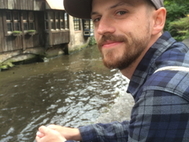
Comparative morphology of the head of the Platydesmida
Although most millipedes (Diplopoda) show a biting–chewing feeding mode, representatives of the so‐called Colobognatha (Platydesmida, Polyzoniida, Siphonocryptida, Siphonophorida), with their more or less reduced mouthparts, are assumed to have evolved a suctorial feeding mode, which enables them to exploit food sources like algal film and fungi hyphae. The Platydesmida are viewed as the key taxon for the understanding of mouthpart adaptations in Colobognatha, as their mouthpart elements still closely resemble those of biting–chewing millipedes. Studies of the skeletomuscular system of the Platydesmida are rare, impeding further understanding of the mouthpart evolution in millipedes. To overcome this impediment in the understanding of millipede evolution, we study the internal morphology of the head in specimens from four genera of Platydesmida: Brachycybe lecontii, Dolistenus spp., Gosodesmus claremontus, and Pseudodesmus spp. Although all Platydesmida show similarly structured skeletal elements and accompanying musculature, they are distinct from all other Diplopoda. Their head lacks eyes and organs of Tömösváry, and is pyriform and posteriorly bulging, overlapping the collum. The narrow mandibles are hidden underneath the broad genae. A previously described gnathochilarial postmentum is absent. Muscle attachment sites, such as the transverse mandibular tendon and the median septum, are reduced. The strong modifications of the head capsule, mandibles, and musculature limit the movability of the mandible for biting–chewing motions based on simulations of possible gape angles. Platydesmida likely show a scraping and slurping feeding mode, which is facilitated by the comparably well‐developed pharyngeal dilator muscles. We suggest that the Platydesmida show an intermediate state between the biting–chewing millipedes and the other suctorially feeding Colobognatha.






